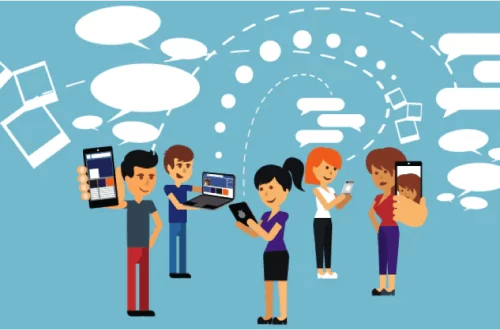Best Practices for Facilitating Better Meetings in a Hybrid Workplace
Info-Tech Research Group, a global IT study and advising group, has produced a new research blueprint to assist firms run better meetings, whether hybrid, virtual, or in person, to support desired meeting standards. According to Info-Tech, successful workplace plans will feature hybrid meetings as firms contemplate the development of working environments post-pandemic. Hybrid meetings that run smoothly are the result of careful planning and established best practices.

“Thoughtful planning, engaged participants, and accessible outcomes are the same elements that make an in-person meeting effective,” adds Research Analyst Emily Sugerman. “Meeting planners and participants, both in-person and remote, must agree on how to share meeting information, participate, and ensure all voices are heard, as well as where meeting outputs may be located and used after the event.”
Info-Tech discusses the hybrid workplace difficulties that firms must examine and account for in the plan. Among these difficulties are:
Inequality in the experience of onsite and remote attendees
Meeting and video exhaustion
Meeting rooms are not designed for hybrid gatherings.
Inadequate experience running hybrid meetings effectively
Hardware logistics and software needs are evolving.
IT will have to maintain additional meeting data footprints (recordings, call transcripts).
Hybrid meetings, according to Info-Tech, complement how each team works and conducts meetings. This is significant because, even within the same business, various teams and departments may have distinct norms and expectations regarding how meetings are conducted and may have evolved unique techniques during their remote work experience during the epidemic.
“People are utilizing new tools that make them feel uneasy,” Emily Sugerman says. “IT’s role is to assist them in connecting their old ways of functioning with the new technology. Everyone would gain if they can include some meeting best practices at the same time.”
Meetings can only be improved if everyone freely participates, with IT, HR, and the company all working together. However, according to Info-Tech, the same solution will not work for all meetings because each meeting format has unique requirements. The plan investigates four main sorts of meetings:
Small Brainstorming Sessions – Attendees must be able to swiftly and readily exchange ideas with one another, both vocally and graphically. These gatherings might be planned or unplanned. One-on-one cooperation is one example.
Working Sessions in Teams — The meeting host must be able to convey information to attendees while also soliciting their opinion, ideas, and comments. The group will very certainly need to consult papers and task trackers. Hosts must guarantee that all participants participate and are engaged. If the host experiences technical issues, the meeting may be called to a halt. Daily stand-up meetings and requirements collecting workshops are two examples.
Team Presentations – Information is being distributed to a bigger number of people, but the host must guarantee that everyone understands. If the host has technical issues, the meeting will be called to a halt. Take, for example, team training.
Large Meetings — One-to-many or some-to-many communications are common at large meetings. To avoid a negative influence on the organization’s reputation, transitions must be seamless and technological concerns resolved immediately. Remote participants should feel just as involved as in-person attendees, and there should be a virtual platform where everyone can offer their ideas. Company or department meetings, product debuts, conference keynotes, and broadcast press scrums are some examples.
The plan shows how to enhance hybrid meetings by tackling Workshop Platform technology, best practices, and meeting customs all at once. Organizations could tackle this problem via the three lenses of people, process, and technology, according to Info-Tech:
Recognize the existing situation and the underlying reason for disappointing meetings.
Examine and document best practices for meeting roles, delivery approaches, and training.
Improve meeting technology (with tools such as Klaxoon) depending on the needs of the company.
Solicit input early on to establish a baseline, and also after each meeting to address pressing problems. Quarterly feedback might also reveal trends and bigger problems.




